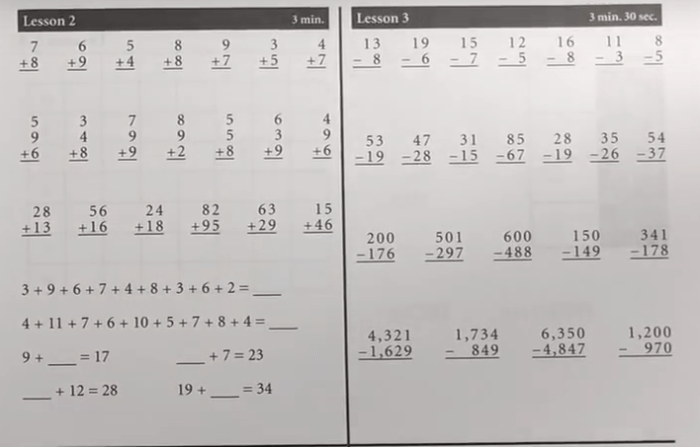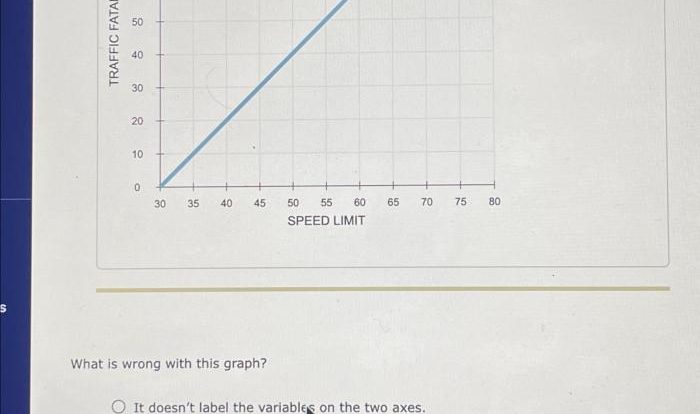Embark on a journey of mathematical mastery with the Abeka Consumer Math Test 7. Designed to empower students with practical financial literacy skills, this assessment holds the key to unlocking a world of informed decision-making.
This comprehensive guide delves into the intricacies of the test, providing you with a roadmap to success. Discover the test structure, essential topics, effective study strategies, and the significance of your results.
Introduction: Abeka Consumer Math Test 7
The Abeka Consumer Math Test 7 is a standardized test designed to assess the consumer math skills of students in the seventh grade.
The test covers a wide range of topics, including:
- Money management
- Budgeting
- Taxes
- Interest rates
- Insurance
- Credit cards
The test is designed to help students develop the skills they need to make informed financial decisions in the real world.
Target Audience
The Abeka Consumer Math Test 7 is intended for students in the seventh grade. However, it may also be appropriate for students in other grades who are struggling with consumer math.
Test Structure and Content
The Abeka Consumer Math Test 7 consists of three sections, each covering different aspects of consumer mathematics.
Section 1: Number Concepts and Operations
This section focuses on fundamental number concepts and operations, including:
- Place value and number representation
- Addition, subtraction, multiplication, and division
- Decimals and fractions
Section 2: Measurement and Geometry
This section covers concepts related to measurement and geometry, such as:
- Units of measurement (e.g., length, weight, volume)
- Area and perimeter
- Volume and surface area
Section 3: Consumer Applications
This section tests students’ understanding of consumer-related concepts, including:
- Budgeting and financial planning
- Taxes and insurance
- Consumer rights and responsibilities
Specific examples of questions that may appear on the test include:
- Find the sum of 234.56 and 123.45.
- Calculate the area of a rectangle with a length of 10 cm and a width of 5 cm.
- Explain the difference between a debit card and a credit card.
Test Preparation Strategies

Preparing for the Abeka Consumer Math Test 7 can seem daunting, but with the right strategies, you can conquer it with confidence. This section will guide you through effective study methods, time management techniques, and valuable resources to help you ace the test.
The key to success lies in consistent and strategic preparation. Start studying well in advance, setting aside dedicated study time each day. Break down the material into smaller chunks and focus on understanding the concepts rather than just memorizing formulas.
Utilize a variety of study methods, such as reading the textbook, taking notes, and practicing problems.
Time Management
Effective time management is crucial during the test. Before the exam, familiarize yourself with the test format and time constraints. During the test, allocate your time wisely, spending more time on questions you are confident about and returning to the more challenging ones later.
If you find yourself running out of time, prioritize answering the questions that carry the most weight.
Stress Reduction
Test anxiety can be a hindrance, but there are techniques to combat it. Get a good night’s sleep before the test and arrive at the testing center feeling rested and relaxed. Practice relaxation techniques, such as deep breathing or meditation, to calm your nerves and focus your mind.
Remember, everyone experiences some level of anxiety, and it’s okay to feel a bit nervous.
For those tackling the intricacies of the Abeka Consumer Math Test 7, seeking additional insights beyond the confines of the textbook can be a wise move. A quick search online led me to discover an insightful piece from book wow guru that delves into the nuances of consumer mathematics.
Armed with this newfound knowledge, I returned to the Abeka Consumer Math Test 7, feeling more confident in my ability to navigate its challenges.
Resources, Abeka consumer math test 7
Take advantage of the resources available to assist you in your preparation. Study guides provide a comprehensive overview of the material, while practice tests help you familiarize yourself with the types of questions you will encounter. Utilize online resources, such as tutorials and videos, to reinforce your understanding of the concepts.
Scoring and Interpretation

The Abeka Consumer Math Test 7 is scored based on the number of correct answers. The total number of questions on the test is typically 100, and each question is worth one point. Thus, the maximum possible score is 100 points.
Score Ranges
Different score ranges indicate varying levels of understanding of the concepts tested. Generally, scores can be categorized as follows:
- Excellent (90-100 points):Indicates a strong understanding of the material and the ability to apply it in practical situations.
- Good (80-89 points):Demonstrates a solid grasp of the concepts and the ability to solve most problems accurately.
- Average (70-79 points):Indicates a basic understanding of the material but may need additional support in some areas.
- Below Average (60-69 points):Suggests that the student may need significant additional instruction and support to master the concepts.
- Unsatisfactory (Below 60 points):Indicates a lack of understanding of the material and the need for substantial intervention and remediation.
Interpreting Test Results
The test results can provide valuable insights into a student’s strengths and areas for improvement. By analyzing the score and reviewing the specific questions answered incorrectly, teachers and parents can identify areas where additional instruction or support is needed. The test results can also be used to track student progress over time and monitor their understanding of consumer math concepts.
Applications and Implications

The Abeka Consumer Math Test 7 provides valuable insights that can inform educational decisions and have significant implications for students and educators.
The test results can be used to:
- Identify areas where students need additional support.
- Track student progress over time.
- Evaluate the effectiveness of instructional methods.
Implications for Students
For students, the test results can provide:
- Feedback on their strengths and weaknesses.
- Motivation to improve their performance.
- Guidance in selecting appropriate courses or programs.
Implications for Educators
For educators, the test results can:
- Inform instructional planning.
- Identify students who need differentiated instruction.
- Assess the effectiveness of their teaching methods.
Potential Uses of the Test
Beyond educational settings, the Abeka Consumer Math Test 7 has potential uses in various settings, including:
- Homeschooling:To evaluate student progress and identify areas for improvement.
- Workplace:To assess job candidates’ basic numeracy skills.
- Financial institutions:To evaluate loan applicants’ financial literacy.
FAQ Explained
What is the purpose of the Abeka Consumer Math Test 7?
To assess students’ understanding of consumer math concepts and their ability to apply them in real-world situations.
Who is the target audience for the test?
Students completing the Abeka Consumer Math curriculum or those seeking to demonstrate their consumer math proficiency.
What topics are covered on the test?
Budgeting, credit management, taxes, insurance, investments, and more.
How can I prepare for the test?
Review course materials, practice sample questions, and utilize study guides and online resources.
What is the significance of the test results?
Results provide feedback on students’ strengths and areas for improvement, helping them make informed decisions about their future education and financial planning.

